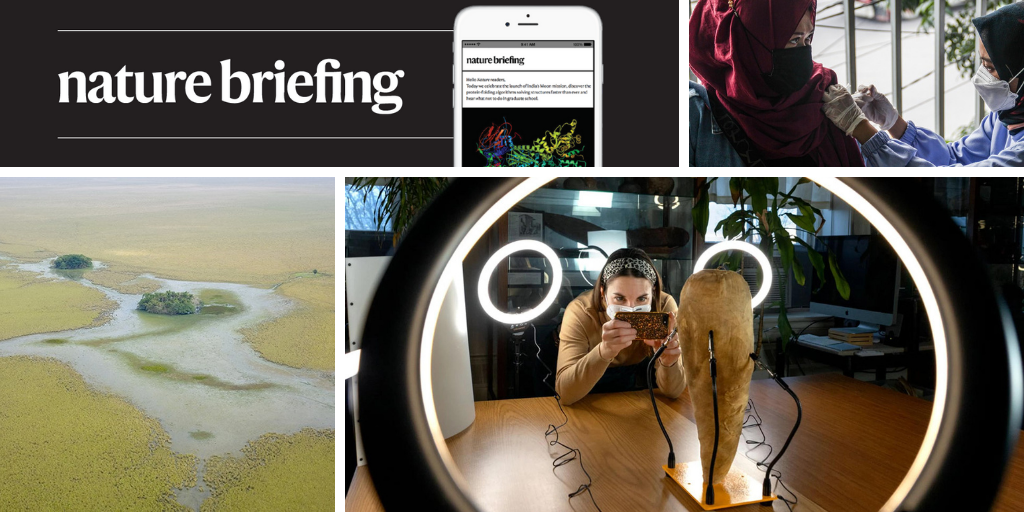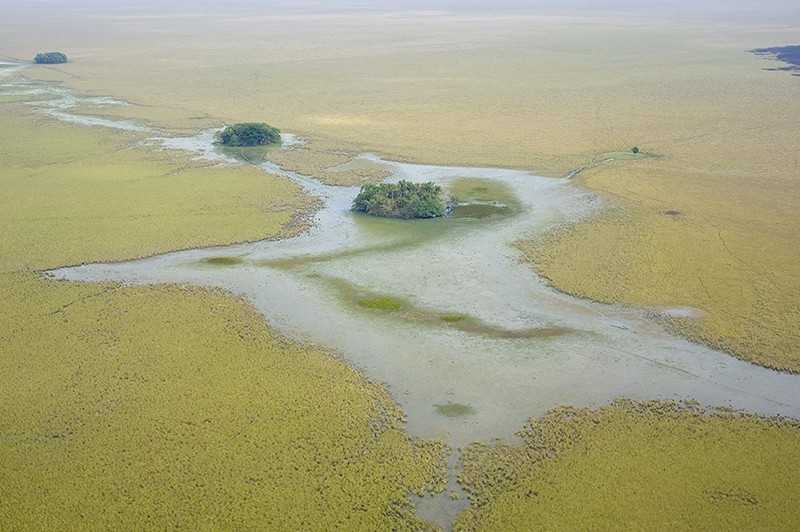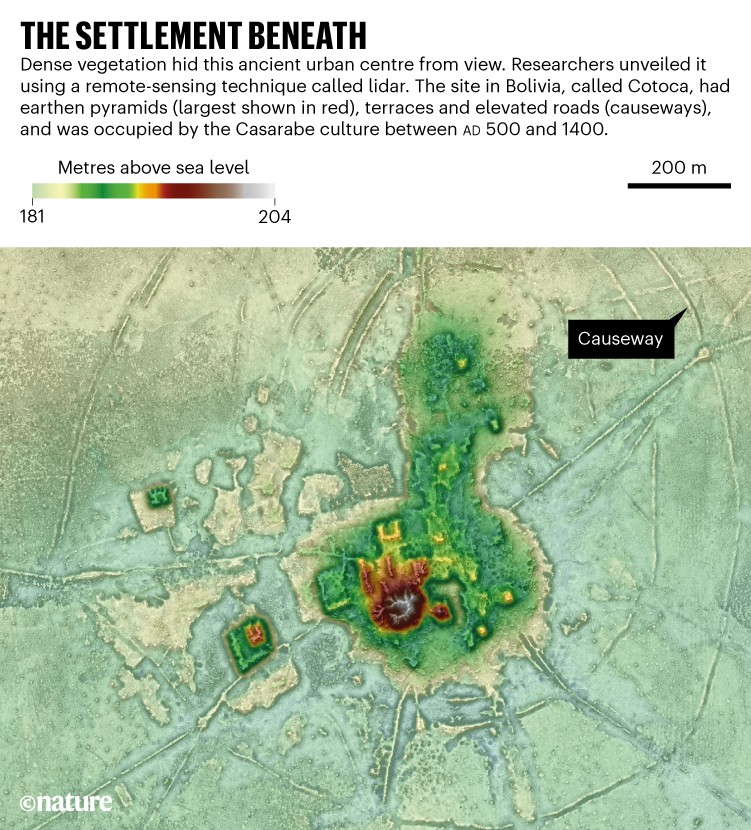Hello Nature readers, would you like to get this Briefing in your inbox free every day? Sign up here.
The southwest corner of the Amazon Basin was once the site of complex urban settlements built by ancient civilizations. Researchers used a laser remote-sensing technology called lidar to map land inhabited by the Casarabe culture, which existed around AD 500 to 1400 in what is now Bolivia. Observations from the air reveal that Casarabe people lived in densely populated centres, featuring 22-metre-tall earthen pyramids, that were encircled by kilometres of elevated roadways. They also had large water-management infrastructure made of canals and reservoirs.
Go deeper with an analysis by archaeologist Christopher Fisher the Nature News & Views article (7 min read, Nature paywall).Reference: Nature paper
Vaccination against SARS-CoV-2 lowers the risk of long COVID after infection by only a small amount — about 15% — according to a study of more than 13 million people. That’s the largest cohort that has yet been used to examine how much vaccines protect against the condition, but it is unlikely to end the uncertainty. The findings disagree with some previous studies, which have found much higher protection rates. Long COVID — illness that persists for weeks or months after infection with SARS-CoV-2 — has proved difficult to study, not least because the array of symptoms makes it hard to define.
Reference: Nature Medicine paper
Scientists are concerned about the unprecedented spread of the highly infectious H5N1 strain of avian influenza in wild birds. This is on top of outbreaks in tens of millions of poultry birds across Europe, Asia, Africa and North America. Researchers say that the virus seems to be spreading in wild birds more easily than ever before. Wild birds spread the virus around the world, posing a significant risk to vulnerable species, making the virus hard to contain and increasing the opportunity for the virus to spill over into people. Researchers emphasize that wild birds should not be harmed to mitigate outbreaks: it doesn’t help and could even make things worse by disrupting birds’ movements and behaviours.
Features & opinion
The first image of our Galaxy’s supermassive black hole, released earlier this month, has already begun to explain some enduring mysteries about the heart of the Milky Way. Alongside other evidence, the results suggest that Sagittarius A* is sucking in matter at a slow pace, making it unusually dim compared with the central black holes of other galaxies. The observations also hint that Sagittarius A* could have been spectacularly active only a few million years ago. And there are fresh questions about some of the largest structures seen in and around the Milky Way.
Reference: Ten papers in Astrophysical Journal Letters
Historian of science Michael Gordin looks at the history of scientific boycotts, from those imposed on the vanquished powers of the Great War in 1919 to those triggered by Soviet aggression in Afghanistan in 1979. Examining the question of scientific boycotts against Russia today, Gordon concludes that they could severely damage the country’s scientific enterprise. But as for influencing the government, “the political leadership has to care about scientists and science”, he writes. “And Russia does not seem to care.”
Genetics researchers are grappling with the fact that white supremacists have expressed an affinity for some of their work. “I’m horrified,” says behavioural economist Daniel Benjamin, whose work on educational attainment was quoted in a distorted form by the man who shot ten people at a supermarket in Buffalo, New York, on 14 May. Twisting science towards racist ends is not new, but the rise of sociogenomics — analysing big genetic data sets to tease out the relationship between genes and social behaviour — is adding fresh fuel to the fire, say scientists. The question is what to do about it. Some research — including Benjamin’s — is girded with statements and FAQ documents that explicitly reject racial supremacy. Some scientists argue that we need more education to inoculate young minds against unsound genetic arguments. And some argue that access to large genomic databases should be reserved for certain types of research. “I think we need to be thinking creatively about all sorts of possible safeguards,” said Benjamin. “And probably the more the better.”







More News
Could bird flu in cows lead to a human outbreak? Slow response worries scientists
US halts funding to controversial virus-hunting group: what researchers think
How high-fat diets feed breast cancer